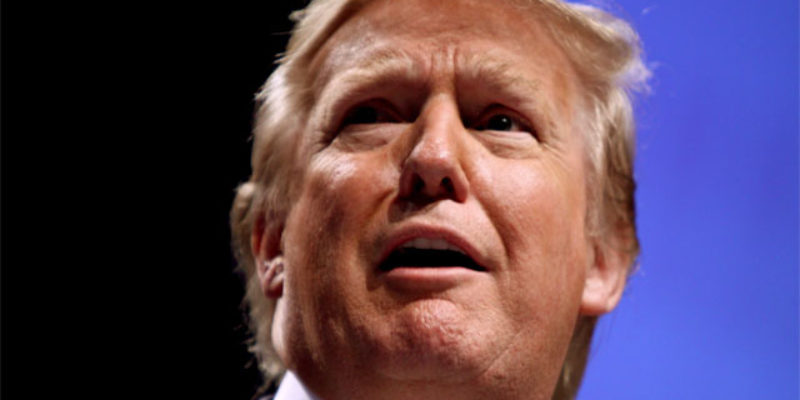They’re particularly howling about the fact that Ted Cruz got seven delegates out of the 18 allocated according to performance in the state’s six congressional districts while Donald Trump got only six.
Here’s a rather long-winded Facebook gripe from Woody Jenkins, Trump’s state co-chair and foremost social media booster…
Jenkins then included a chart which explains precisely why the allocation went the way it went…
First, every campaign was made aware of the rules going in – repeatedly – and no one objected. That’s a direct quote from Lionel Rainey, Rubio’s spokesman in Louisiana.
And now, you can look at the chart and see why Cruz got that extra delegate.
This really isn’t complicated, and it’s actually a system lots of states use for this sort of thing – and in particular it’s how they do it in Iowa.
Look on the right side of that chart and just go down row by row.
In CD1, Trump got a delegate for getting more than 33.3% of the vote. Cruz was just shy of that, and therefore picked up a delegate. But take that “1” away from the left side of the decimal point and Trump has 0.33 of another delegate. Rubio has 0.38. Who gets the third delegate? Rubio does, because he has more vote to apply to it.
In CD2, Trump was over 33.3%, and Cruz was close enough for a delegate of his own. Rubio gets 0.40 toward a delegate, Trump has 0.31 toward one. Therefore Rubio picks up a delegate.
In CD3, Trump and Cruz both got over a third, and both got a delegate for it. Rubio has 0.34 to apply to a delegate, while Trump has 0.26 and Cruz has 0.16. Therefore Rubio picks up a delegate.
In CD4, Cruz won the overall vote, though he and Trump were both over 33.3%. Rubio performed very poorly, and because he did he only had 0.28 toward a delegate. Cruz has 0.31. Therefore Cruz managed two delegates in CD4.
In CD5, Rubio’s 0.29 slightly outpaces Trump’s 0.26 and therefore all three get delegates.
In CD6, Cruz outpaced Trump, but Rubio has 0.35 toward a delegate and Cruz only has 0.21 toward one, so Rubio gets a delegate.
This is really easy math.
And yes, Rubio was shut out of delegates for not getting 20 percent of the statewide vote. He was ineligible to get any of the 28 at-large delegates. Trump got 12 of those, Cruz got 11 of them and since candidates not getting 20 percent combined to account for about 18 percent of the vote, that percentage of delegates – which comes to right around five of 28 – are “unbound” at the convention.
Again, Woody Jenkins could have raised a stink about this well before the primary. He had multiple opportunities to do so and opted not to. Why? Because it’s the most obvious way to allocate delegates.
And also because the polls of the Louisiana race showed Trump winning by 20 points. Had those polls panned out, Trump would have likely picked up two of the three delegates in each congressional district, and you’d have seen Woody Jenkins soberly defending the just and well-reasoned system for awarding them.
He’s been around for 40 years, and he’s seen enough elections to know the flaws of any kind of system you want. And now he’s butthurt and he’ll make trouble about it.
Incidentally, 18 delegates out of 46 is 39 percent, which is what both Trump and Cruz ended up within 2.5 percent of. And 5 delegates out of 46 is 11 percent, which was Rubio on the nose. That’s about as equitable a distribution as one could get.
There is the question of unbound delegates and who gets them, but it’s hard to argue that the three unbound delegates already selected – the state party chair and the national committeeman and committeewoman – should get to go to the convention as delegates. We don’t know who the other two will be, but the rules say that the state party executive committee chooses those.
Cruz may end up with a majority of the unbound. The national committeeman is Ross Little, who was Cruz’ state co-chair. The national committeewoman is Lenar Whitney, and it’s a reasonable bet she’d be for Cruz. Where Roger Villere, the state party chairman, is isn’t publicly known. And we don’t know who the other two will be, much less who they’ll be for – it wouldn’t be a bad idea for the executive committee to have one Cruz delegate and one Trump delegate given how close the race was.
Either way, there is nothing fishy about how the delegates have been apportioned so far. The rules were pretty straightforward and, it must be reiterated, agreed to in advance. This whining after the fact is really unseemly.
UPDATE: A quote from Jason Dore’, the executive director of the Louisiana GOP, on the allocation of the congressional district delegates and whether, as Trump’s people, and in particularly Jenkins, are now accusing, there were changes made to the rules on that allocation…
Not a rule change.
I sent out a memo to the campaigns last week telling them how the calculations would be done. We wanted to announce before the election how we viewed proportionality. The rules provided the authority for the Executive Committee to do so.
We asked Woody on multiple occasions to send his suggestions. He sent nothing.
We sent the memo out to all campaigns and received no objections. The intro of the memo said “Below are the mathematical formulas we intend to use to determine allocations tomorrow. If you have any questions or objections, please contact me immediately to discuss.” Woody had four chances to participate in writing the formula and declined.
Advertisement
Advertisement



